In 2019, the Fleet Solid Support ship competition was suspended to ensure that “requirements could be met” and a “value for money solution found”.
The suspension raised hope from trade unions that the competition could be restarted and involve only UK shipyards.
In September last year, Defence Secretary Ben Wallace stated the vessels were “warships”, effectively confirming they would be built in the United Kingdom as the United Kingdom has a policy of not building warships outside of the UK.
Defence Secretary Ben Wallace said:
“Shipbuilding has historically been a British success story, and I am determined to revitalise this amazing industry as part of this Government’s commitment to build back better. The Fleet Solid Support warships competition will be the genesis of a great UK shipbuilding industry, and allow us to develop the skills and expertise for the shipyards of tomorrow.”
The Ministry of Defence also said at the time that the competition to build the three Fleet Solid Support warships will help “revitalise British shipbuilding by requiring a significant proportion of the build and assembly work to be carried out in the UK”.
The ‘Spring 2021’ restart date was reconfirmed this week.
Stephen Morgan, Shadow Defence Minister, asked via a Parliamentary written question.
“To ask the Secretary of State for Defence, pursuant to the Answer of 30 November 2020 to Question 120779 on Fleet Solid Support Ships, what recent assessment he has made of whether that target will be met.”
Jeremy Quin, Minister of State for the Ministry of Defence, responded:
“It remains our intention to commence the Fleet Solid Support ship competition during spring 2021.”
Fore more on the programme, bidders etc I recommend heading over to NavyLookout for an in-depth look. Just click the link below.
Fleet solid support ships for the Royal Navy to be built in Britain


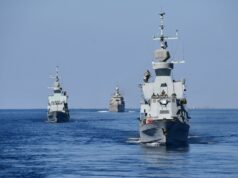
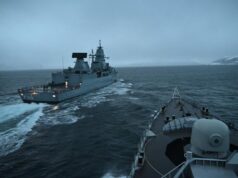
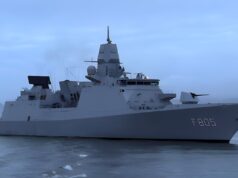
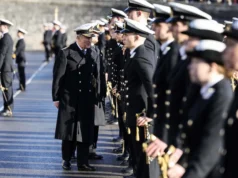

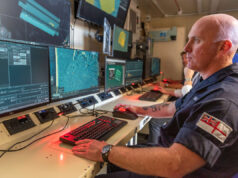
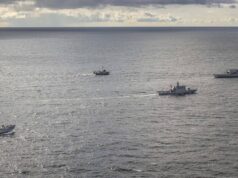

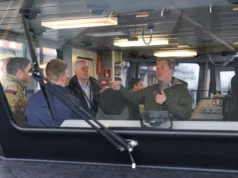
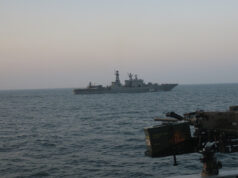

More good news. It keeps coming.
Still talking about 3 of them as well, that’s reassuring.
I’d still take that with a pinch of salt.
The argument further down the line could well be that 2 are needed to alternate with the CSG and provide a backup but a 3rd isn’t needed with a more capable class of ship and a RN either grouped around the carriers or forward deployed.
Fair point mate, we’ll get what we get but for now the talk is still 3 so being the glass half full/naive fool that I am, I’m happy enough for now.
3 would be great, but I’m a realist!
Meh, people can label themselves whatever they want, its not going to make a difference in the big picture. Generally if you’re pessimistic it feeds itself and you’re right more often than not. If that’s important to you.
Enjoy it while we can. SDSR coming out soon
Will these have the Cats and Traps fitted for heavy drones , airborne radar and refuelling purposes
Thanks Ian
Indubitably!
…and a flight deck and a huge beer fridge!
Maybe one of these!
“Leonardo pitches UK-built AW149 as Puma replacement for RAF”
https://www.janes.com/defence-news/news-detail/leonardo-pitches-uk-built-aw149-as-puma-replacement-for-raf
Out of date allready. Future medium lift won’t be a helicopter. As there is a huge market
While I like the look of the FARA programme (Apache size) and FLRAA (Puma size) in the US, I have to say I don’t really see them or anything remotely similar being used anywhere except by the US military and maybe a couple more at small scale for another 20-ish years.
Look how long it’s taken the V-22 to become a solid and reliable product- and it’s still prohibitively expensive. The technology for FARA and FLRAA seems to be almost completely held by US firms (the Leonardo civilian tilt rotor is licenced from Boeing, I believe, and too small to be a Puma replacement), and they’re not mature at this point. I think they’re currently intended to enter service in 2030, but FARA will only have prototypes for flight testing at the end of 2022 and FLRAA will only get prototypes in 2026. That’s if everything runs smoothly.
No-one else, especially our potential competitors in Russia and China are developing something similar as far as I’m aware. So we’re unlikely to be finding ourselves at a technological disadvantage anytime soon in this area, from them or their “client nations”.
I agree with you, the future is not a traditional helicopter, but that is an acquisition cycle way for the UK in my opinon. AW149s built in the UK would be my choice as a Puma replacement, and maybe as a solution for the AAC’s battlefield utility role that I think is imperfectly filled by the too-small Wildcat.
Whichever candidate the US Army selects to replace its Blackhawk helicopter will have a huge foreign sales market outside of Europe. The Bell V-280 has been flying since 2017 and has a clocked speed of 322 mph with twice the range of a Blackhawk and 25% more cargo capacity. That is a quantum leap in “copter” performance.
https://www.janes.com/defence-news/news-detail/uk-reveals-puma-replacement-plan
Hopefully built in the UK and quickly, howeve I do not see the first ship available until 2024 at the earliest. I do see trouble ahead if these ships are to be built in england or NI, the SNP will throw another hissy fit. Yes I would like to see them built with the same ideas of Fort Victoria and Fort George with hanger space for 4 Merlins and 12-24 Sea Ceptor missiles. Before someone goes of on one, Fort Vic was designed for the old Sea Wolf and hanger space for three Sea Kings. These ships would be seen as main targets in a shooting match, possibly as important a target as the carriers if not more so, as we do not have enough DDGs and FFGs then the supply ships would need some limited air defence at reach.
I think you are in the right space there.
It would probably be 12 Ceptor as that one control cabinet.
Fortunately decent sized Helo spots are in vogue as should be hangar space.
As GunBuster is fond of saying kill the kill chain. No replenishment = no kill chain.
Ron, the Forts were built specifically as anti-submarine mother ships to support a group of frigates in the North Atlantic. Thus they were not only designed as store ships but also as mini helicopter carriers from which a number of ASW helos could operate. The new FSSS role is different. They are to support a carrier group which will already be operating a number of ASW helos from the carrier. Yes they will need aviation facilities for cross decking but I doubt very much they will receive the 4 hanger fit of the Forts. I’d just be grateful that they are actually going to get built.
Rob, I agree with all of your points especially the last one. Just get them built. However the reason for my original comment is just the way a replenishment ship operates. There is also a diffrence of building a ship for peace time duties and one for war. If built for peace then it could be found wanting in times of war, if built for war they are to expensive for peace.
A supply ship will find itself sometimes detached so it can replenish, ideally we would have smaller replenishment ships supporting the big fleet replenishments ships that will support the battle groups. We don’t have the numbers for that. With then the FSS ships being detached they will have limited escort if any, (possibly a job for the T31) so it would need to look after itself. I am not thinking that they should always have three or four whirlybirds, but the hanger capacity to carry them if need be. There might also be a time when we will operate again a ASW frigate group, so the ASW mothership is needed. As someone once said space is cheap, metal costs a bit more and equipping costs a lot. So if you have the space to start with you can do something with it. However as you said just get on with it and build them.
That echo my thoughts, fit them for not with and use containerise weapons package, open architecture combat management system to plug and play. So we can configure vessels and make in role fit and optimise equipment usage.
Agree Ron,
I would get SeaCeptor and Marlett on everything big enough. Harland and Wolfe I reckon. As for the SNP can I suggest stuff the SNP.
Totally agree, they want independence they can have it with everything that it brings. Build the ships in the remainder of the uk.
Sends the right messages to the supporters of the future queen of Scots.
While I agree, not Scotland, wouldn’t Cammell Laird be in the running?
Yes, I believe Camell Laird is part of the ‘team UK’ bid.
We got to 11 posts before the SNP were mentioned this time Andy! I’m beginning to think that we can bend just about every post back to Irn Brew and the excellent product line of the Tunnocks Factory…..
Tried the Caramel wafers, superb mate….
Good catch John, its all a bit depressing isn’t it.
On the bright side, was reading an article on the Beeb website that interest in independence has dropped from a peak of 56% about Xmas to about 52% now. Obviously these things fluctuate but I’m loving the SNP tearing themselves apart at the moment….
Anyway….. RFA’s….
The problem with upgunning these with Ceptor is its not just the fire control cabinet that is needed to launch the missiles.
You start needing
The renderings show Phalanx as being fitted which can be run from the local control console and contains its own search and track radars(And a Thim) for not just AA but also surface engagements.
Against a swarm of boats or air drones its better to have lots of cheap tungsten penetrators in the air than a few expensive missiles. As I have said previously a Mid East nation recently dropped a 1000 USD quadcopter drone with a 3 mil USD missile. That is hardly a cost effective return or a good use of your finite missile resources.
They will get Phalanx and when available Dragonfire for short range engagements. They will also get DLH decoy launchers ,30mm AGS and a Torpedo decoy system which is usually FTR on HVUs depending on the tasking they are doing.
Helo wise probably a Hangar capable of taking 2 merlin size helos and a deck capable of operating a Chinook.
And that is all that is needed. We are always in danger of wanting to arm so many ships to the hilt the costs go through the roof.
Folk wanting Mk41 on T31’s a case in point!
Not needed. Harpoons (Block II) on launchers bolted to the decks of Type 31s would be plenty, effective and much cheaper.
With that thinking it is no surprise that Russians are much more advanced with cruise missiles in their heavy corvettes.
It’s a supply ship, it doesn’t need to armed to the teeth. It’s never going to travel without escorts. It will act as part of a carrier group, protected by at least 2 Type 45s armed with Aster 30s and 2 Type 23/26s armed with Sea Ceptors, not to mention a carrier armed with F35s, themselves armed with Meteor air to air missiles and ASRAAMs; what more air defence does it need?
A pair of Phalanx on board is plenty.
Famous last words. Ships get caught out in war & the way we run our navy in peace makes it all the more likely.
Agreed!
Hear, hear!
Would have thought trying to get the BAE 40mm added in place of Phalanx would be a more proportional and achievable uplift in defensive capability.
Not really. The 40mm would be better against small boat targets, and helo’s and slow aircraft. But against missiles or small UAV’s? Not a hope without an offboard targeting solution that just won’t be present on FSS or anything short of a Frigate. It’s the inbuilt radar on Phalanx which is really useful…
Phx system is self contained only requires a power source. Over the BAE 40
Power and a sea water connection for cooling!
Wot, no gas or mains drainage!
An interesting question will be how many Artisan radars will be spare by the time FSS is built…
The Ocean was sold with hers in place, but the T31 will not be porting over Artisan from T23’s…a lot will depend on timing but we may well find ourselves having a number of Artisan going spare…
I’d rather see 40mm bofors than Phalanx. Better range & flexability.
If we can build 2 large aircraft carriers at the 3rd of the cost of a Ford class US carrier surely we can build 2/3 of these ships in British yards.
Surely 1 by the side of CSG. One off to replenish. Then one on way to CSG from port. They’ll need to lead frog the CSG on full ahead, right?
Well it would seem the UK Govt stepped outside of its own policy when the contracts for the 4 x Tide tankers went to South Korea in the last decade. A choice driven NOT by the fact that Scottish ship-building has historically been the best in the world, NOT that submarine refitting was moved to England to gerrymander Tory votes, NOT that England’s shipyards were not up to it, but there was a lack of domestic tenders.
I was under the impression that UK yards could not meet the required timescales due to the work on the QE class carriers.